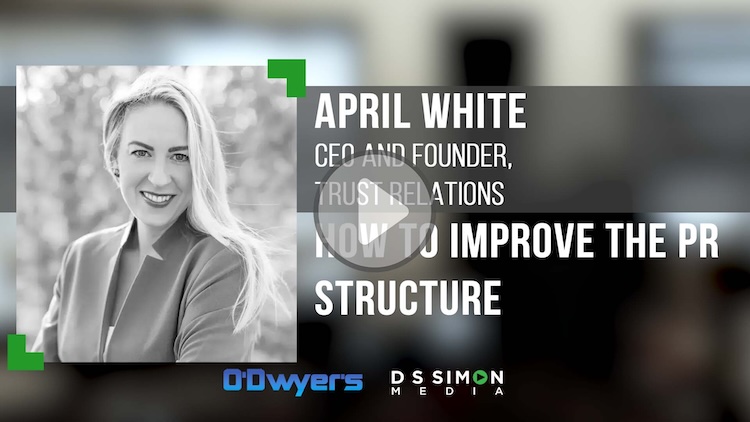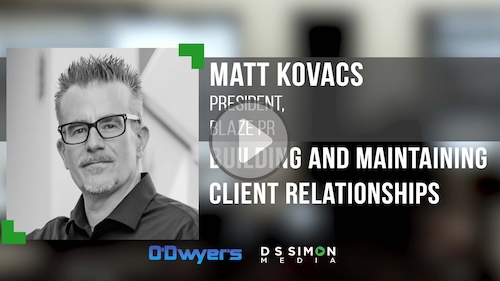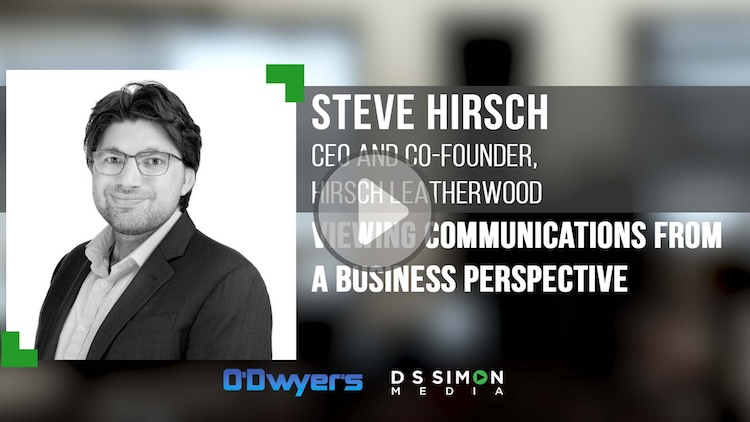If you already have a tough time understanding what, precisely, the practice of public relations is all about -- just listen to the executives who run public relations agencies. And you’ll become even more confused.
· “Public relations is all about content amplification,” says one.
· “Public relations concerns community management,” argues another.
· “Public relations must talk to the audience of one,” says a third.
· “Public relations must harness mobile environments,” offers one more.
You get the idea.
Clearly, social media marketing has dominated the focus of new generation PR professionals.
But the fact is that harnessing social media or mobile platforms or sponsored content or any of the other marketing communications outlets and vehicles of the 21st century is only a part of the 21st century practice of public relations.
Today’s PR practice -- if the field is to advance and lead -- must be more all-encompassing than merely serving as an extension of the marketing department.
Rather, here are real opportunities for public relations in this new year and beyond.
· Creative content provider.
By definition, PR professionals must be the organization’s most savvy communicators. Anybody can talk or write or tweet or use Facebook.
It’s the job of a professional communicator to use these vehicles more creatively, for maximum marketing impact.
In the age of social media, PR executives talk about “content as king.” The key to the content equation – be it media publicity ideas or sponsored web site content or Twitter messages to provoke interest – is creativity. That’s what truly distinguishes one client’s message from another’s; the creativity of the content.
Public relations people in 2014 must be the source of creative thinking so that their client’s messages resonate beyond all others.
· Reputation manager.
The traditional role of PR practice as the keeper of the reputation has never been more critical. Income inequality, government and business mistrust, privacy v. security -- all these issues must be considered in the context of an organization’s or a candidate’s or a nation’s reputation.
Sure, social media plays a role – especially in monitoring attacks to one’s reputation. But a savvy reputation manager must possess many more skills than a familiarity with the Net and social media.
Reputation managers must understand business and businesses, history and society, and the difference between right and wrong.
In a society where any nitwit with a computer or a tablet or a mobile phone becomes an instant publishing authority on whose good and whose bad, there is no more important corporate function than that of protecting and defending and preserving an organization’s reputation
· Ethical counselor.
In a related vein, PR practitioners in 2014 must also be willing and ethical counselors, to keep their clients above reproach. With the traditional public relations counselor straddling the thin line between simultaneously serving as corporate advocate and public representative – he or she must be ready to advise on the thorniest issues with which organizations are confronted.
- How should the governor explain his lack of involvement in a bridge scandal that has been in the news for months?
- How should the CEO justify his $20 million compensation package in light of the fines and abuse his bank has suffered over the past year?
- How should the company respond to the sabotage of massive client data?
- How much blame should the President take for his botched signature healthcare program?
Issues like these demand advisors who may be advocates but not sycophants. They demand a knowledge that transcends mere partisanship or technical proficiency or facility with social or any other type of media.
An ethical public relations counselor is one who is wise, experienced and brutally honest, in support of the best interests of the organization and the public.
· Risk taker.
Finally, all of these skills demand that the public relations manager of the 21st century be a risk-taker, willing to stick his or her neck out, go against the grain and take considered chances to achieve valid goals.
This is the skill that will distinguish a star public relations performer from a run-of-the-mill one.
Jay Carney is a perfectly adequate Presidential press secretary; he conducts daily White House briefings by sticking closely to his printed script, rarely venturing beyond what’s written for him to say. He is largely a factotum, a mouthpiece, accepted but not particularly respected by the White House press corps. As such, he is of limited public relations value to his boss, Barack Obama.
Carney’s predecessor, Robert Gibbs, on the other hand, was more than willing to depart from his talking points to take risks for his President. As press secretary, Gibbs was humorous, passionate and confident, and thus significant weapon for a man he had served for many years.
The point is that if the practice of PR is to continue to make headway as an honorable and respected profession in 2014, then public relations managers must be willing to take legitimate risks in what they create and what they counsel, all to serve the best interests of the organizations they represent.
And then they can start to worry about “content amplification.”










 Have a comment? Send it to
Have a comment? Send it to 
No comments have been submitted for this story yet.